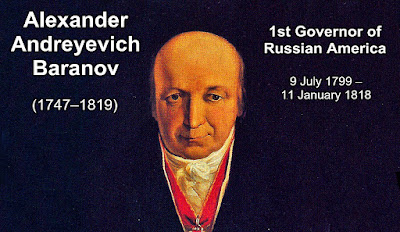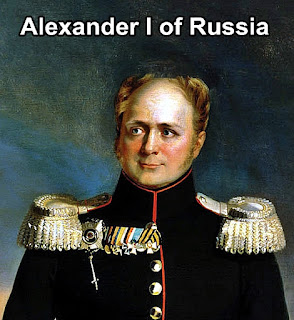Tuesday, April 4, 2023
Russian colonisation of Hawaii
Kamehameha I also known as Kamehameha the Great conquered most of the Hawaiian Islands, formally establishing the Kingdom of Hawaiʻi in 1810. Kaumualiʻi, was the last independent aliʻi nui of Kauaʻi and Niʻihau before becoming a vassal of Kamehameha I of the unified Kingdom of Hawaiʻi in 1810. Kaumualiʻi continued to serve as Kamehameha's governor of Kauaʻi.
The Russian Empire and the Russian-American Company established contact with Hawaiian king Kamehameha I in 1804. Russian vessels continued to visit the Kingdom irregularly, with the primary transactions were focused on foodstuffs. On January 29, 1815 a Russian-American Company ship, Bering, dropped anchor near Waimea on Kauai. Captain James Bennett was ordered by Russian-American Company Governor Alexander Andreyevich Baranov to use its estimated 100,000 roubles worth of furs and other cargo to purchase needed food and material supplies for settlers in Russian America. On the next night the vessel ran aground in a storm. Bennett made an agreement with King
Kaumualii, giving him the wrecked ship though its cargo remained Russian property. Several hundred Kauaians were involved in salvaging the furs and purchased supplies. Despite this, Bennet would later report that the ship and its cargo were both seized by Kaumalii. Two months later the stranded crew was evacuated from Kauai by Albatross. Bennett and two other American captains employed by the Company pressed Baranov to wage an armed punitive expedition against Kaumualii. The proposal stirred long discussions between Baranov and his deputies, but the governor favored a peaceful solution.
In 1815 the Russian-American Company send German physician Georg Anton Schäffer to Hawaiʻi to retrieve goods seized by Kaumualiʻi, chief of Kauaʻi island. According to the Company instructions, Schäffer had to begin by establishing friendly relations with king Kamehameha I. Then, with or without Kamehameha's support, Schäffer had to recover the cost of lost merchandise from Kaumualiʻi. Kaumualiʻi eagerly signed a "treaty" granting Russian
Tsar Alexander I of Russia a protectorate over Kauaʻi. Kaumualiʻi convinced Schäffer that the Russians could just as easily capture the whole archipelago. Schäffer promised that Tsar Alexander would help him to break free of Kamehameha's rule. Kaumualiʻi allowed Schäffer to build a fort near Waimea, named Fort Elizabeth in honor of the Empress of Russia at the time,
Louise of Baden. Two others – Fortress Alexander and Fort Barclay-de-Tolly – were named for the reigning emperor Alexander and his marshal Barclay-de-Tolly and constructed near Hanalei on Kauaʻi. Alarmed by all these activities the natives of Hanalei had revolted, leveled the forts at Hanalei and burnt a distillery, which had just been built and killing one of the Aleutian workers employed by Schäffer.
When it was discovered that Schäffer did not have the backing of the Tsar, he was forced to leave Kauaʻi. On July 19 1817 Schäffer left Hawaii for Guangzhou. Captain Alexander Adams replaced the Russian flag with the new Kingdom of Hawaii flag some time before October 1817. Russian Fort Elizabeth eventually came under the control of Kamehameha supporters. The Schäffer affair cost the Russian-American Company, between 200,000 and 230,000 rubles.









